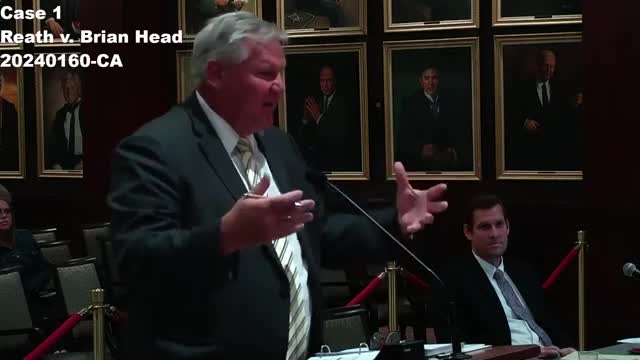Bridal Head Town faces negligence claims over high-pressure water system incident
October 24, 2024 | Utah Court of Appeals Live Stream, Utah Appellate Court, Utah Judicial Branch, Utah
This article was created by AI summarizing key points discussed. AI makes mistakes, so for full details and context, please refer to the video of the full meeting. Please report any errors so we can fix them. Report an error »

On October 24, 2024, the Utah Court of Appeals convened to discuss a significant negligence case involving a high-pressure water system and the responsibilities of municipal entities in ensuring user safety. The case centers around an incident where a user, Mr. Reif, was injured while operating a bulk water dispenser, raising questions about the adequacy of warnings and instructions provided to users.
During the proceedings, attorneys debated whether the responsibility for the incident lay primarily with Mr. Reif or the municipality, Bridal Head Town. The discussion highlighted the legal principle that landowners must take reasonable steps to protect invitees from foreseeable dangers. The court examined whether Bridal Head Town had fulfilled its duty to adequately warn users about the potential hazards associated with the high-pressure hose, which was likened to a fire hose in terms of pressure.
A key point of contention was whether Mr. Reif had received sufficient instruction on how to safely operate the water system. The defense argued that Mr. Reif was aware of the need to turn off the valve to ensure safety but lacked specific guidance on the dangers posed by the hose's pressure. Testimonies indicated that while some users had been informed about the risks, Mr. Reif had not received the same level of instruction, which could be pivotal in determining liability.
The court also explored the implications of the water system's design, which was gravity-fed and subject to fluctuating pressure levels. This raised further questions about the municipality's obligation to inform users of these variations and the potential risks involved. The attorneys emphasized that the lack of clear communication regarding the system's operation could have contributed to the incident.
As the court deliberated, the discussions underscored the broader implications of municipal responsibility in ensuring public safety. The outcome of this case could set a precedent for how local governments manage and communicate safety protocols for public utilities, particularly in scenarios involving potentially hazardous equipment.
In conclusion, the Utah Court of Appeals' examination of this negligence case not only addresses the specifics of Mr. Reif's incident but also raises critical questions about the responsibilities of municipalities in safeguarding their constituents. The court's decision will likely have lasting effects on how safety instructions are communicated and enforced in public utility operations.
During the proceedings, attorneys debated whether the responsibility for the incident lay primarily with Mr. Reif or the municipality, Bridal Head Town. The discussion highlighted the legal principle that landowners must take reasonable steps to protect invitees from foreseeable dangers. The court examined whether Bridal Head Town had fulfilled its duty to adequately warn users about the potential hazards associated with the high-pressure hose, which was likened to a fire hose in terms of pressure.
A key point of contention was whether Mr. Reif had received sufficient instruction on how to safely operate the water system. The defense argued that Mr. Reif was aware of the need to turn off the valve to ensure safety but lacked specific guidance on the dangers posed by the hose's pressure. Testimonies indicated that while some users had been informed about the risks, Mr. Reif had not received the same level of instruction, which could be pivotal in determining liability.
The court also explored the implications of the water system's design, which was gravity-fed and subject to fluctuating pressure levels. This raised further questions about the municipality's obligation to inform users of these variations and the potential risks involved. The attorneys emphasized that the lack of clear communication regarding the system's operation could have contributed to the incident.
As the court deliberated, the discussions underscored the broader implications of municipal responsibility in ensuring public safety. The outcome of this case could set a precedent for how local governments manage and communicate safety protocols for public utilities, particularly in scenarios involving potentially hazardous equipment.
In conclusion, the Utah Court of Appeals' examination of this negligence case not only addresses the specifics of Mr. Reif's incident but also raises critical questions about the responsibilities of municipalities in safeguarding their constituents. The court's decision will likely have lasting effects on how safety instructions are communicated and enforced in public utility operations.
View full meeting
This article is based on a recent meeting—watch the full video and explore the complete transcript for deeper insights into the discussion.
View full meeting

